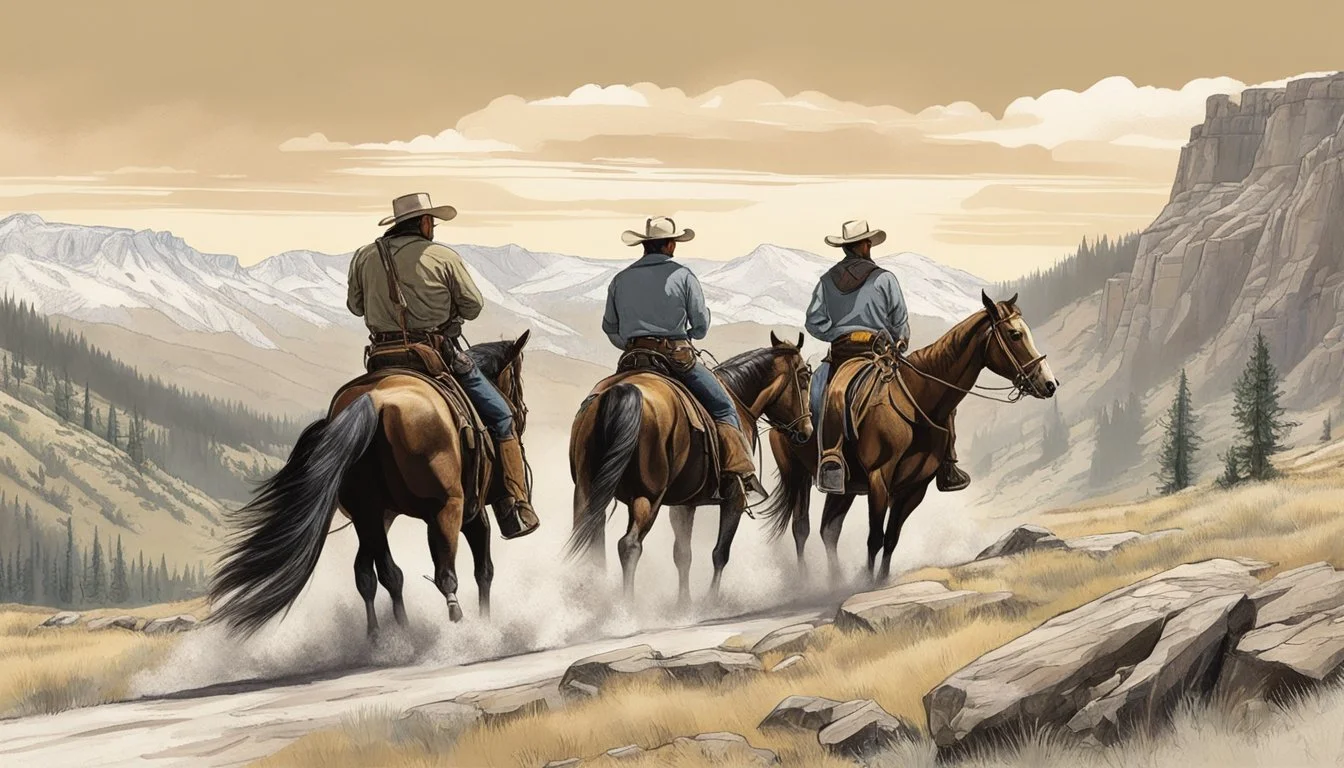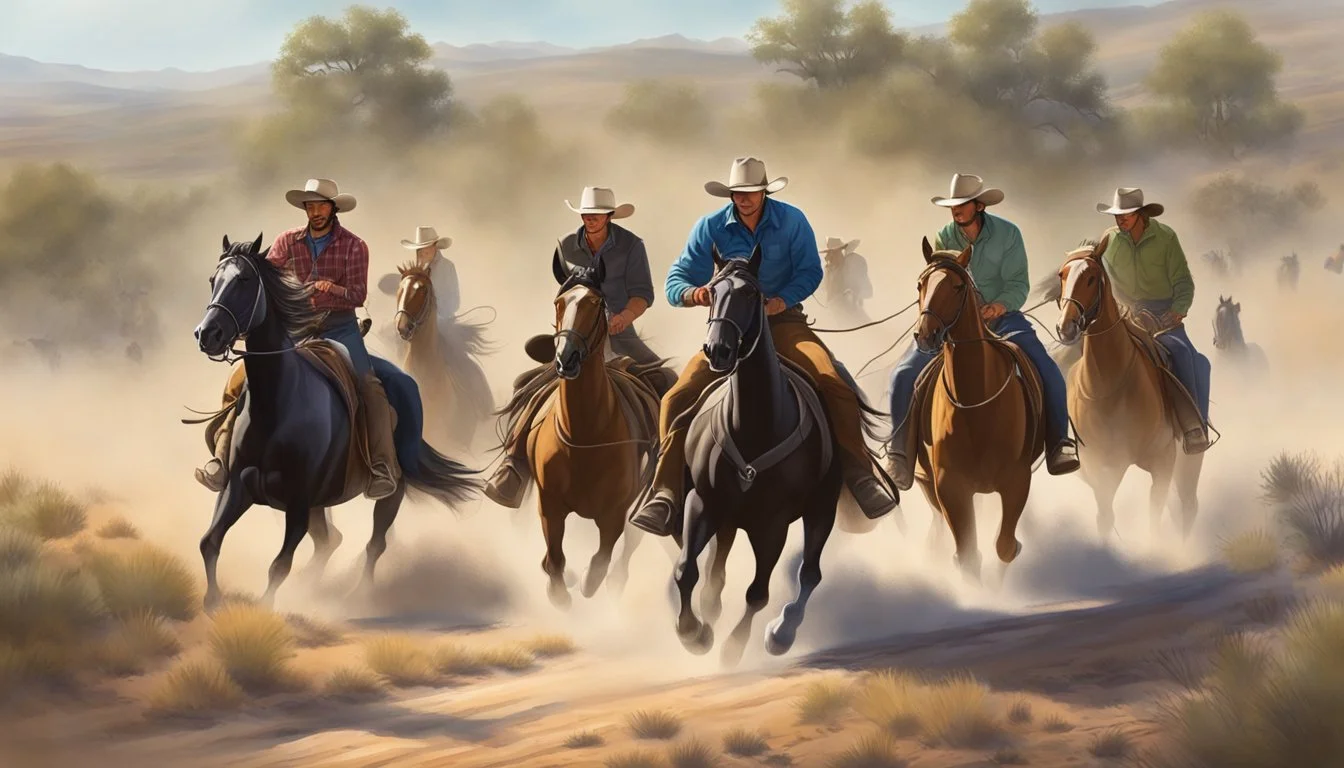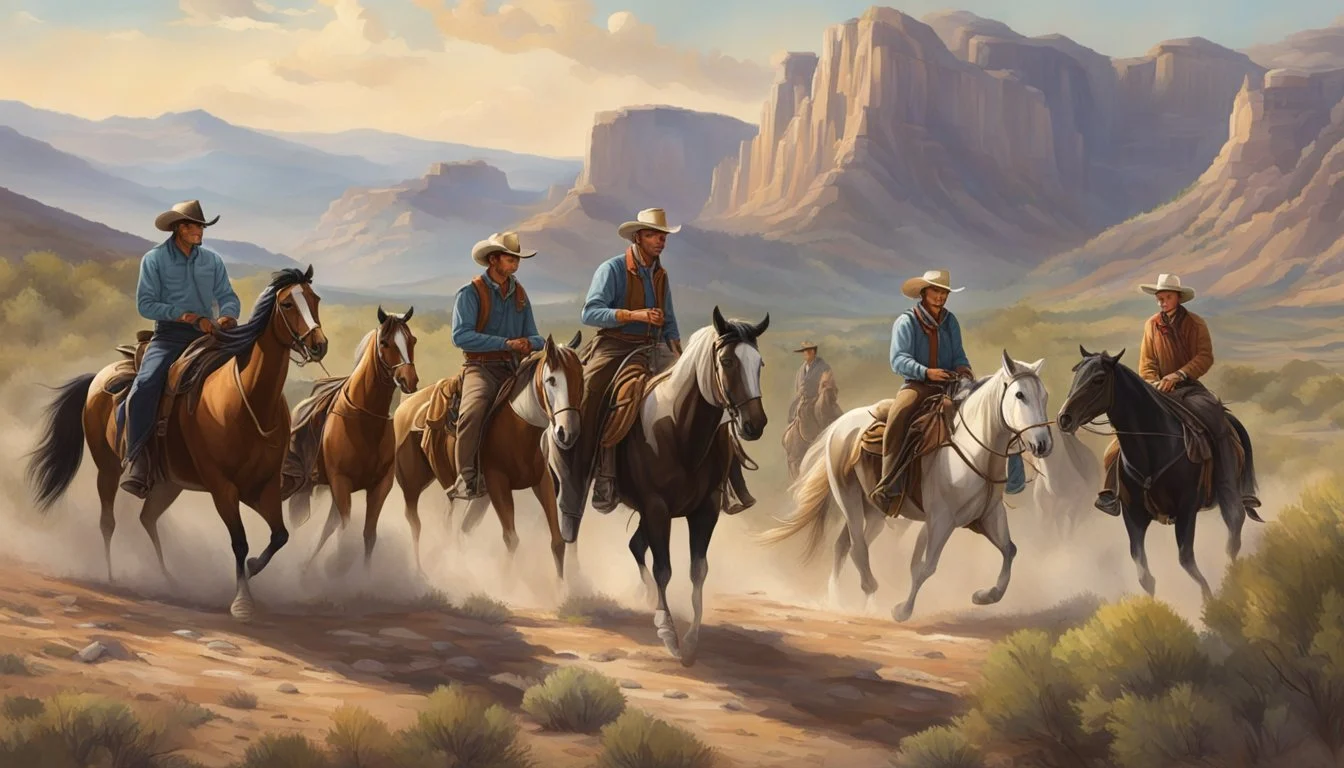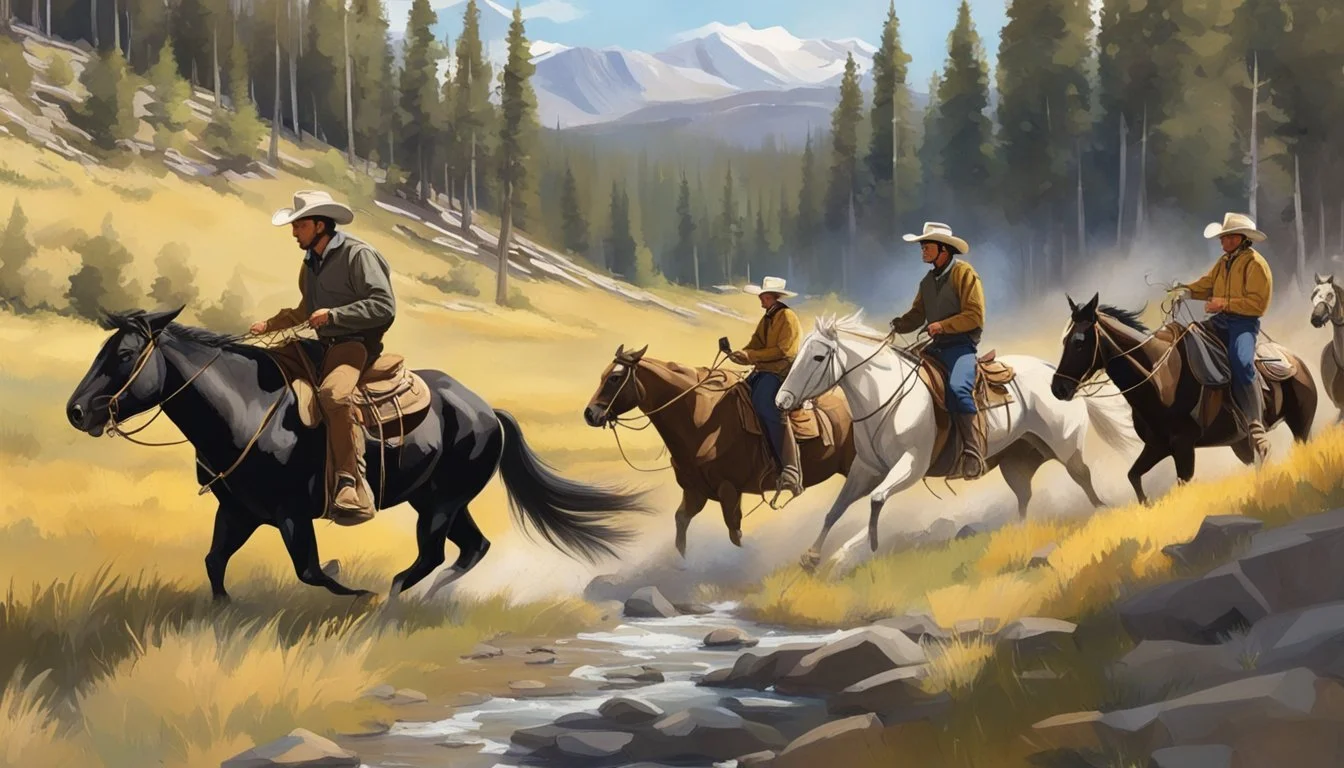Yellowstone Exposes Dark Realities of Ranching Economics That Could Change Everything
Yellowstone, the hit television series, offers viewers a captivating glimpse into the world of modern ranching. The show's dramatic portrayal of the Dutton family's struggles to maintain their vast Montana ranch resonates with real-world agricultural challenges. While Yellowstone incorporates fictional elements for entertainment, it accurately depicts many economic pressures faced by today's ranchers, including land disputes, market fluctuations, and the constant threat of development.
The series sheds light on the delicate balance ranchers must strike between preserving tradition and adapting to changing times. It explores the financial burdens of running a large-scale agricultural operation, from tax obligations to the impact of volatile cattle prices. These economic realities often force ranchers to make difficult decisions about their land and legacy.
Yellowstone's portrayal of ranching economics has sparked discussions about the future of agriculture in rural America. The show highlights the tension between maintaining traditional ways of life and embracing modernization, a conflict that many real ranchers grapple with daily. By presenting these issues through compelling storytelling, Yellowstone has brought attention to the complex challenges facing the agricultural industry in the 21st century.
Historical Evolution of Ranching
Ranching has shaped the American West's landscape, economy, and culture for over 150 years. This industry's transformation mirrors broader changes in agriculture, technology, and society.
American West and Ranching Roots
The roots of American ranching trace back to the mid-1800s. Settlers moved westward, claiming vast tracts of land for cattle grazing. Open range practices dominated early ranching, with cowboys driving herds across unfenced territories.
Ranching culture quickly became synonymous with the American West. It fostered a unique way of life, complete with its own customs, skills, and values. The iconic cowboy emerged as a symbol of independence and rugged individualism.
This period laid the foundation for ranching's enduring impact on American cultural heritage. Many modern ranches, like the fictional Dutton Ranch in "Yellowstone," have histories stretching back generations.
Transition from Open Range to Modern Ranching
The late 19th century marked a shift from open range to enclosed pastures. Factors driving this change included:
Introduction of barbed wire fencing
Increased settlement and land ownership disputes
Harsh winters that decimated cattle populations
Ranchers adapted by implementing new livestock management techniques. They focused on breeding programs, grazing rotation, and improved veterinary care.
Technological advancements further transformed ranch operations. Motorized vehicles replaced horse-drawn equipment. Modern irrigation systems allowed for better forage production.
Today's ranches blend traditional practices with cutting-edge technology. GPS tracking, drones, and data analytics now play roles in cattle management.
Influence of Television Series on Public Perception
TV shows like "Yellowstone" and its prequel "1883" have rekindled public interest in ranch life. These series offer glimpses into both historical and contemporary ranching challenges.
"Yellowstone" portrays the Dutton family's struggles to maintain their vast Montana ranch. It highlights issues like:
Land use conflicts
Economic pressures
Environmental concerns
While dramatized, these depictions reflect real challenges faced by modern ranchers. The show has sparked conversations about the realities of 21st-century agriculture.
"1883" provides historical context, showcasing the hardships of pioneer ranchers. It illustrates the dangerous journey westward and the establishment of early ranches.
These portrayals, though fictionalized, have increased awareness of ranching's cultural significance and ongoing evolution.
The Economics of Ranching
Ranching economics involve complex interplays between profit margins, operational costs, and land values. Modern ranchers face significant financial pressures as they navigate changing market conditions and regulations.
Profit Margins in Cattle Ranching
Cattle ranching profit margins are often slim and volatile. Ranchers must carefully manage expenses like feed, veterinary care, and equipment to remain profitable.
Market prices for cattle fluctuate based on supply and demand, impacting revenues. Drought and other weather events can drastically increase costs.
Diversification into premium markets like grass-fed or organic beef can boost profits. Some ranchers supplement income through tourism or hunting leases.
Economic Pressures on Ranch Operations
Rising costs squeeze ranch operations. Land prices have increased significantly in many areas, making expansion difficult. Labor shortages drive up wages for ranch hands.
Environmental regulations add compliance costs. Water rights disputes in arid regions threaten access to crucial resources.
Development pressures tempt some ranchers to sell valuable land. Others struggle to pass down operations to the next generation due to estate taxes.
Impact of Land Ownership and Property Rights
Land ownership is crucial for ranching viability. Many ranchers lease additional grazing land from the government or private owners to support their herds.
Property rights conflicts arise over issues like wildlife management and public land use. Ranchers must navigate complex regulations around endangered species protection.
Conservation easements offer tax benefits but limit future land use. Mineral rights can provide additional income but may conflict with ranching activities.
Inheritance and estate planning are critical for preserving multigenerational ranches. Rising land values complicate succession planning for ranch families.
Modern Agriculture and Technological Advancements
Ranching has evolved significantly with the integration of cutting-edge technologies. These advancements have revolutionized livestock management, improved efficiency, and promoted sustainable practices in modern agriculture.
Mechanization and GPS Technology
Modern ranches utilize sophisticated machinery and GPS systems to optimize operations. Tractors equipped with precision GPS guide planting and harvesting, reducing waste and increasing yields. Drones survey vast pastures, monitoring herd health and identifying areas needing attention.
Automated feeding systems ensure livestock receive precise nutrition, while smart fencing uses GPS to create virtual boundaries. This technology allows ranchers to manage grazing patterns without physical fences, promoting optimal land use and reducing environmental impact.
Livestock Management and Breeding Programs
Advanced software tracks individual animal health, productivity, and genetics. Electronic ear tags enable real-time monitoring of livestock location and vital signs. This data helps ranchers make informed decisions about breeding, culling, and medical treatments.
Genetic testing and artificial insemination programs enhance herd quality. Ranchers can select for desirable traits like disease resistance, feed efficiency, and meat quality. These techniques result in healthier animals and improved profitability.
Sustainability and Conservation Efforts
Modern ranching emphasizes sustainability through water conservation and soil management. Precision irrigation systems reduce water usage while maintaining crop health. Soil sensors provide data on moisture and nutrient levels, allowing targeted fertilizer application.
Rotational grazing practices, guided by GPS and satellite imagery, prevent overgrazing and promote grassland regeneration. Many ranches incorporate renewable energy sources like solar panels and wind turbines to reduce their carbon footprint.
Conservation efforts include habitat restoration for native species and implementing buffer zones near water sources. These practices demonstrate the industry's commitment to environmental stewardship alongside agricultural production.
Land Use and Environmental Concerns
Modern ranching faces complex challenges at the intersection of land use, wildlife preservation, and environmental stewardship. Ranchers must balance economic pressures with conservation efforts and changing regulations.
Urban Expansion and Land Development
Urban sprawl encroaches on traditional ranchlands, driving up property values and taxes. Ranchers face difficult decisions about selling parcels for development or maintaining their operations. Some opt for conservation easements to protect land while gaining tax benefits.
Real estate pressures lead to fragmentation of large tracts, impacting grazing patterns and wildlife corridors. Ranchers adapt by leasing additional grazing areas or intensifying production on smaller acreages.
Zoning changes and infrastructure projects can disrupt ranch operations. Ranchers engage in local planning processes to advocate for agricultural interests and buffer zones between residential areas and working lands.
Wildlife Management and Environmental Regulations
Ranchers play a key role in wildlife habitat conservation. Many implement rotational grazing systems that benefit both livestock and native species. Fencing modifications allow wildlife movement while containing cattle.
Predator conflicts pose ongoing challenges. Ranchers use non-lethal deterrents like guard animals and range riders to protect herds. Some participate in compensation programs for livestock losses.
Environmental regulations impact land use decisions. Ranchers navigate complex rules around wetland protection, endangered species habitat, and water quality. Many partner with conservation groups on habitat improvement projects.
Challenges of Water Conservation and Climate Change
Drought resilience is crucial for ranch sustainability. Ranchers invest in efficient irrigation systems and drought-tolerant forage varieties. Some adopt regenerative grazing practices to improve soil health and water retention.
Climate change brings more extreme weather events. Ranchers face increased wildfire risks and shifting growing seasons. Many diversify income streams through agritourism or carbon sequestration programs.
Water rights disputes intensify as resources become scarcer. Ranchers participate in watershed management efforts and explore water-sharing agreements. Some convert to less water-intensive livestock or implement precision irrigation technologies.
Socio-Cultural Dynamics of Ranching
Ranching culture in the American West intertwines family traditions, lifestyle preservation, and generational power dynamics. These elements shape the social fabric of ranching communities and influence their economic decisions.
Ranching Culture and Family Traditions
Ranching families like the Duttons in "Yellowstone" often pass down their operations through generations. This continuity fosters strong family bonds and a deep connection to the land. Traditions such as branding cattle, seasonal roundups, and community gatherings reinforce cultural identity.
Ranch work typically involves all family members, with specific roles assigned based on age and gender. Children learn ranching skills from a young age, preparing them to eventually take over the family business.
Many ranchers take pride in their self-reliance and ability to overcome challenges. This resilience is a key aspect of ranching culture, portrayed through characters like John Dutton.
Preservation of the Ranching Lifestyle
Modern ranchers face pressure to maintain their way of life amid economic and environmental changes. The struggle to preserve ranching traditions often conflicts with urbanization and changing land use.
Ranching families may resist selling their land to developers or converting it for other purposes. This commitment to preserving open spaces and traditional practices is a central theme in "Yellowstone."
Some ranchers diversify their operations to include tourism or conservation efforts. These adaptations aim to sustain the ranching lifestyle while meeting new economic realities.
Education and outreach programs help ranchers share their cultural heritage with the public. This fosters understanding and support for the ranching way of life.
Generational Conflicts and Power Dynamics
Tensions often arise between older and younger generations in ranching families. Differing views on ranch management, modernization, and succession planning can lead to conflicts.
Characters like Beth Dutton in "Yellowstone" represent the challenge of balancing family loyalty with personal ambitions. These dynamics reflect real-world struggles faced by ranching families.
Power dynamics within ranching communities are complex. Long-established families may hold significant influence, while newcomers may struggle to gain acceptance.
Decisions about land use, water rights, and grazing permits can create rivalries between ranchers. These conflicts often involve both economic and social factors.
Ranching in Film and Popular Media
Depictions of ranching in popular media have significantly shaped public perceptions of modern agricultural life. Television shows and films offer glimpses into the challenges and lifestyle of ranchers, often blending reality with dramatized elements for entertainment value.
Yellowstone and Representation of Ranching Life
The Yellowstone series has become a cultural phenomenon, offering viewers a window into the world of modern cattle ranching. Set in Montana, the show portrays many authentic aspects of contemporary ranch operations. Scenes of cattle branding, auctions, and daily routines reflect real-world practices. The series also addresses genuine issues facing ranchers, including land disputes and economic pressures.
Yellowstone's creators pay attention to details like the types of vehicles, livestock, and equipment used on modern ranches. This authenticity helps viewers connect with the characters and their struggles. The show's dramatic storylines are interwoven with accurate depictions of ranching challenges, creating a compelling narrative that resonates with audiences.
Dutton Ranch: A Cultural Touchstone
The fictional Yellowstone Dutton Ranch has become a cultural touchstone, symbolizing the enduring spirit of the American West. Kevin Costner's portrayal of John Dutton, the ranch patriarch, embodies the resilience and determination of modern ranchers. The ranch itself serves as a character, representing the legacy and traditions of ranching families.
Dutton Ranch showcases the complexities of running a large-scale agricultural operation in the 21st century. It highlights the delicate balance between preserving ranching heritage and adapting to modern economic realities. The ranch's struggles with land developers and government agencies reflect real-world conflicts faced by many ranchers today.
Influence on Public Perception and Tourism
Yellowstone's popularity has significantly influenced public perception of ranching and the American West. The show's portrayal of ranch life has sparked increased interest in Western culture and tourism. Many viewers have been inspired to visit Montana and surrounding areas, hoping to experience the lifestyle depicted on screen.
This surge in tourism has brought both benefits and challenges to ranching communities. While it boosts local economies, it also raises concerns about preserving authentic ranching culture. The show's impact extends beyond tourism, shaping conversations about land use, conservation, and the future of agriculture in the West.
• Increased interest in ranch vacations and experiences • Growing awareness of modern ranching challenges • Debates about accurate representation vs. romanticized portrayals
Challenges and Future of Ranching
Modern ranching faces significant hurdles that threaten traditional ways of life. Economic pressures, land disputes, and balancing heritage with progress are key issues shaping the industry's future.
Economic Pressures and Property Taxes
Ranchers grapple with rising operational costs and fluctuating cattle prices. Feed, equipment, and labor expenses continue to climb, squeezing profit margins. Property taxes pose a particular burden, especially for large landholders.
Many ranches operate on thin margins, making them vulnerable to market volatility. Droughts and extreme weather events can devastate herds and pastures, leading to financial strain.
Diversification has become crucial for survival. Some ranchers supplement income through tourism, hunting leases, or energy development on their lands.
Land Disputes and Rights of Native American Tribes
Conflicts over land use and ownership remain contentious issues in ranching communities. Disputes often arise between ranchers, developers, and Native American tribes with historical claims to the land.
The fictional Yellowstone ranch's battles with Thomas Rainwater and the Broken Rock Reservation mirror real-world tensions. These conflicts highlight complex legal and ethical questions about land rights and resource management.
Cooperation and compromise between ranchers and tribes are increasingly necessary. Some communities have found success through joint conservation efforts and cultural exchange programs.
Balancing Tradition and Progress in the Face of Change
Ranchers must adapt to changing consumer preferences, environmental regulations, and technological advancements. Sustainable ranching practices are gaining traction, focusing on soil health and biodiversity.
Preserving ranching heritage while embracing innovation is a delicate balance. Many ranchers incorporate modern technologies like GPS tracking and data analytics to improve efficiency.
Passing ranches to the next generation has become challenging. Young people often leave for urban opportunities, threatening the continuity of family operations.
Education and mentorship programs aim to attract new entrants to ranching. These initiatives teach both traditional skills and modern business practices to ensure the industry's future.




